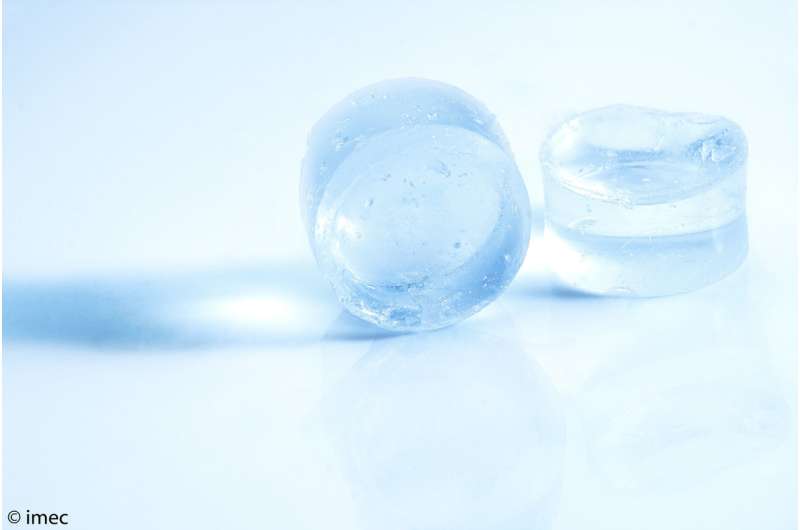Milestone for next-gen solid-state batteries to power future long-range electrical vehicles

Imec, the world-leading research and innovation hub in nanoelectronics, energy and digital technologies and partner in EnergyVille, has fabricated an innovative type of solid-state Li-ion battery achieving an energy density of 200 Wh/liter at a charging speed of 0.5C (2 hours). This battery is a milestone on our roadmap to surpass wet Li-ion battery performance and reach 1000Wh/L at 2C by 2024. With this clear performance engineering path, imec's battery technology is ready to become a contender to power tomorrow's fast-charging, long-haul vehicles.
The future of mobility will be largely electrical, powered by fast-charging, safe, and compact batteries. Today's rechargeable Li-ion batteries have some room for improvement, but not enough to allow vehicles sufficient range and autonomy. Imec's researchers are working on a next generation of batteries, replacing the wet electrolyte with a solid, in order to increase the energy density of the cell.
Recently, imec developed a solid nanocomposite electrolyte with an exceptionally high conductivity of up to 10 mS/cm and with a potential to increase this even further. With this new electrolyte, imec has now made a prototype battery. The electrolyte was applied into the battery cell as a liquid precursor, and solidified afterwards. The prototype battery achieved a volumetric energy density of 200 Wh/liter at a charging speed of 0,5C (2 hours).
"Our results show that we can make solid-state batteries that have the potential to reach the capabilities of wet batteries, and this using manufacturing processes similar to those for wet batteries," says Philippe Vereecken, principal scientist and program manager at imec, "But unlike wet-batteries, our solid-state batteries will be compatible with metallic lithium anodes with a target of 1,000Wh/liter at a charging speed of 2C (half an hour). This, together with their longer lifetime and improved safety, makes them a promising compact battery technology for tomorrow's long-range vehicles."
To further improve the battery performance, imec is looking into combining nanoparticle electrodes with its solid nanocomposite electrolyte. Imec uses ultra-thin coatings as so-called buffer layers to control the interface between the active electrode and electrolyte. This technology can also be used to improve the performance of standard liquid cells and even for all-solid-state batteries with pressed and sintered inorganic electrolytes.
Bringing innovative battery technology to fruition and transfer it to the market will require the involvement and commitment of the world's major material suppliers and battery producers. Therefore, imec performs its battery R&D as a collaborative program for open innovation to which it invites all interested parties.
Provided by IMEC





















